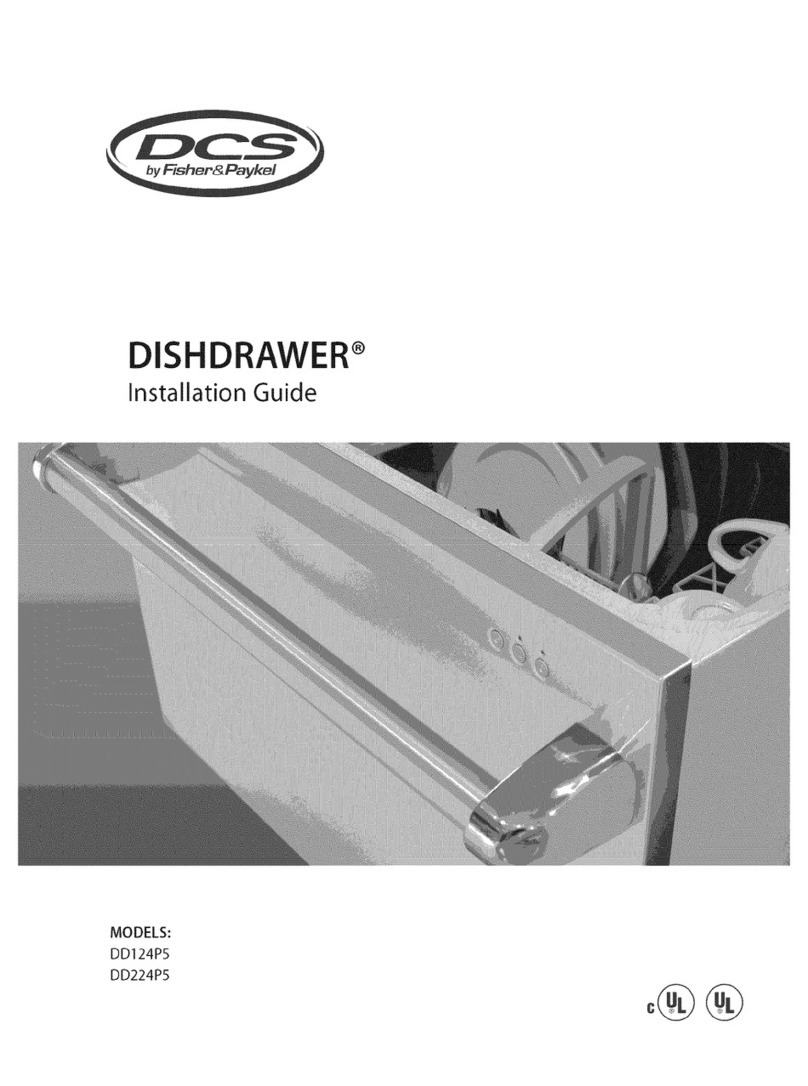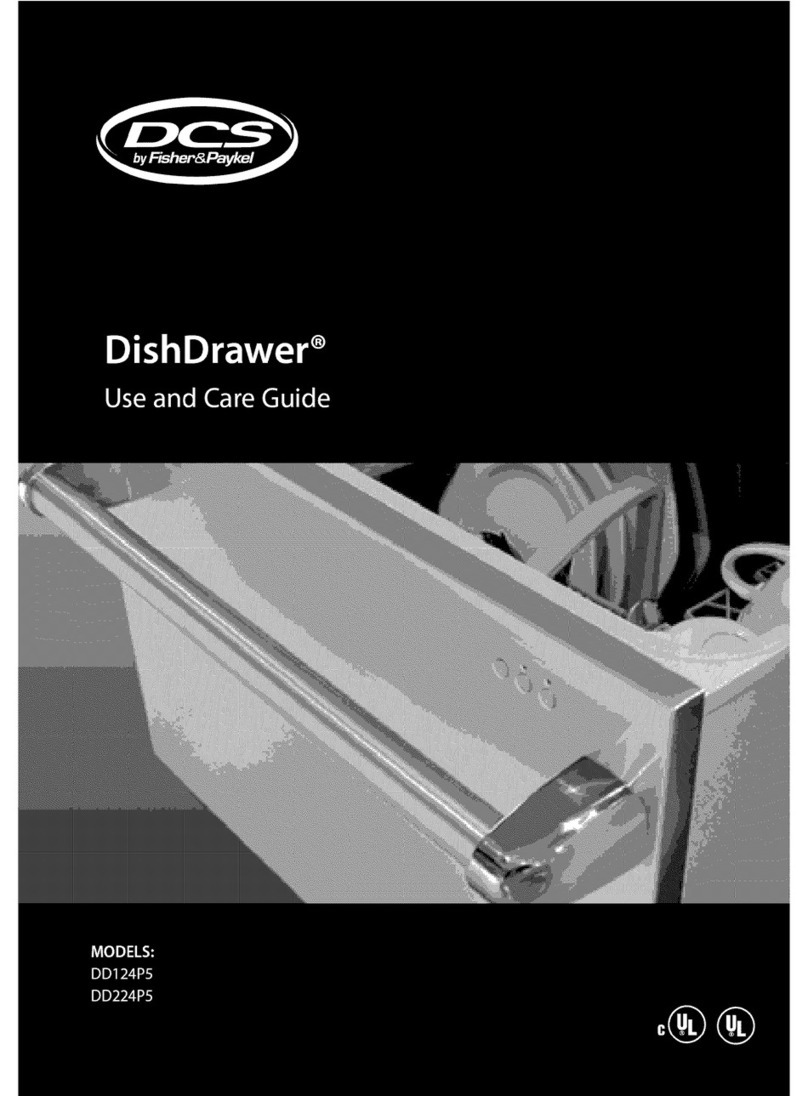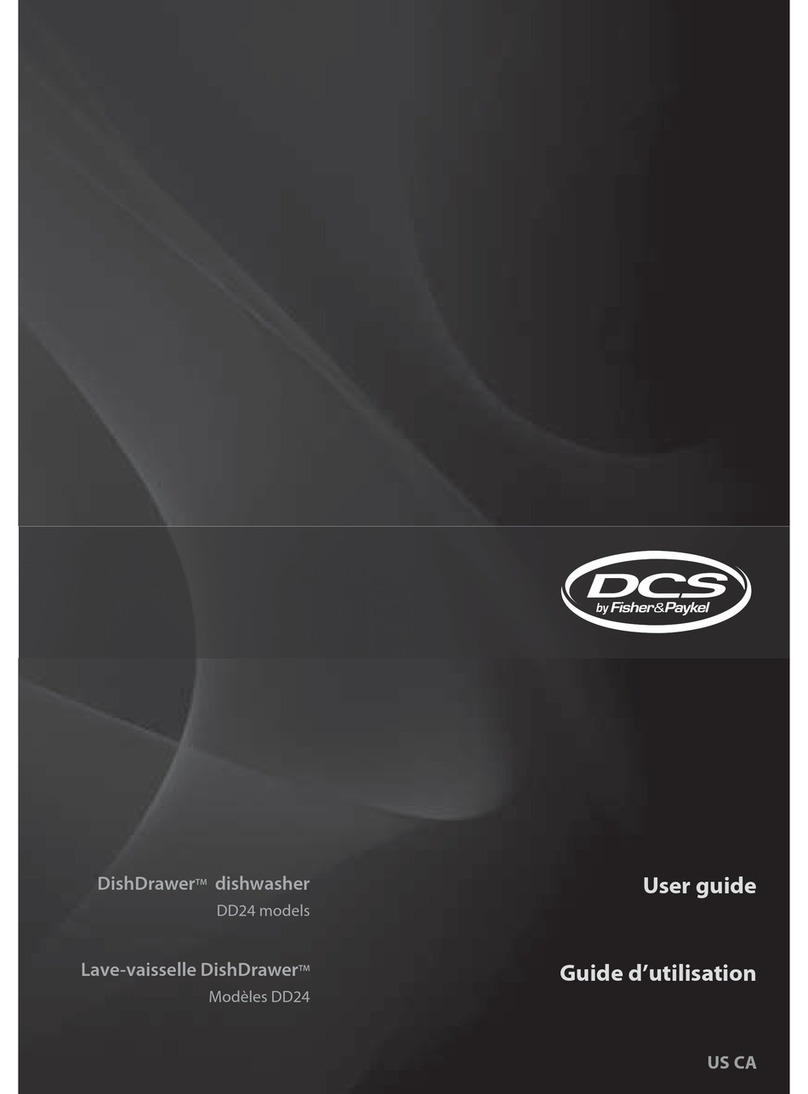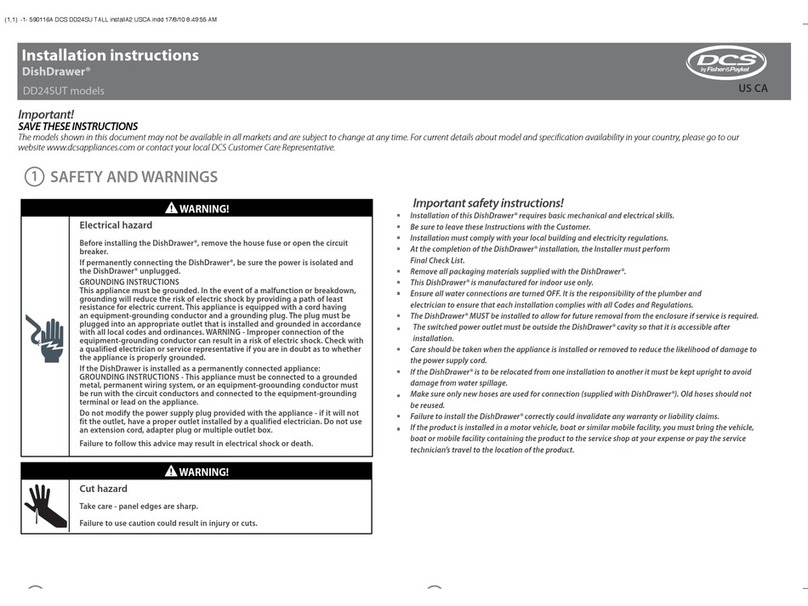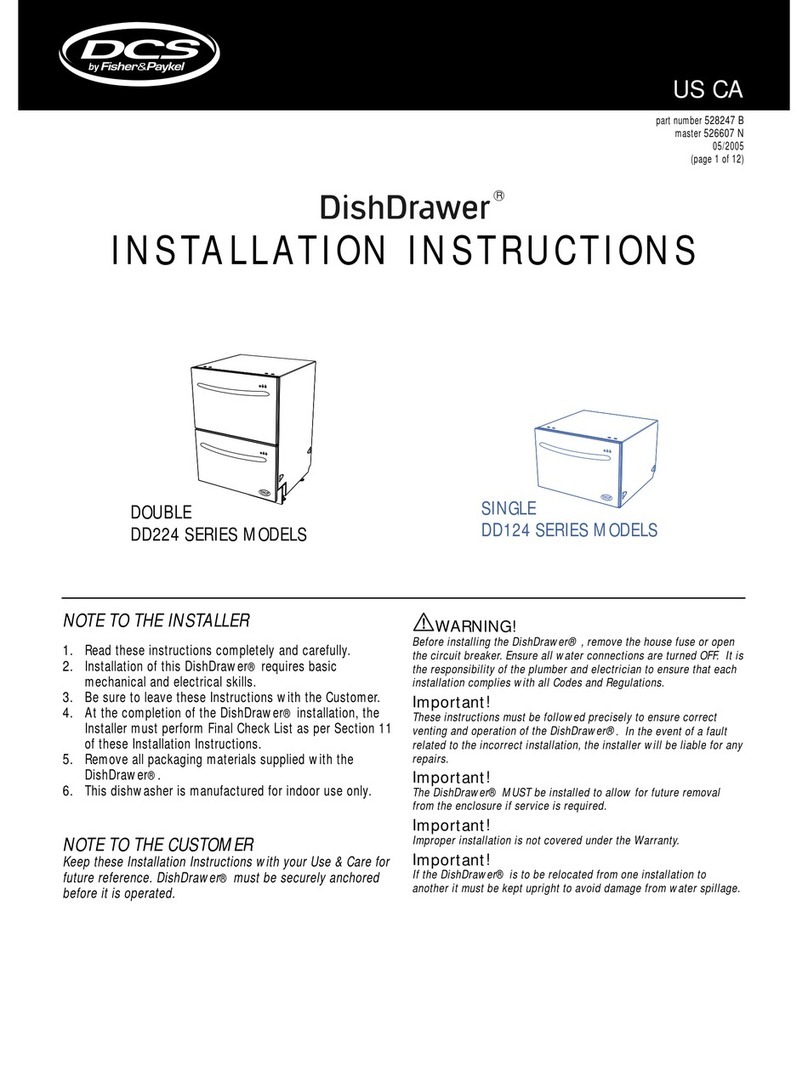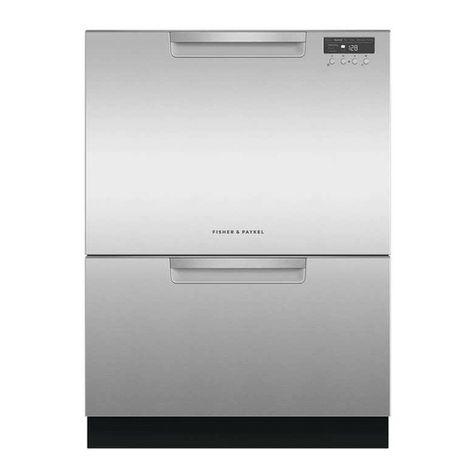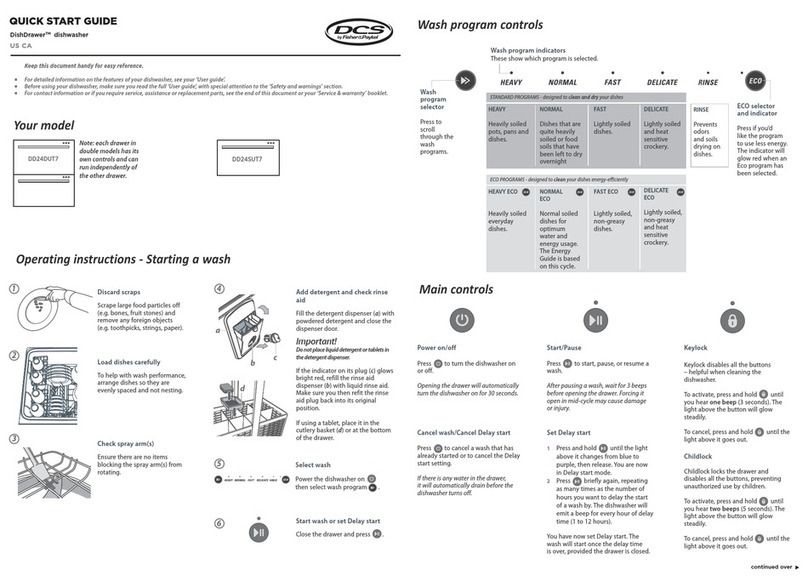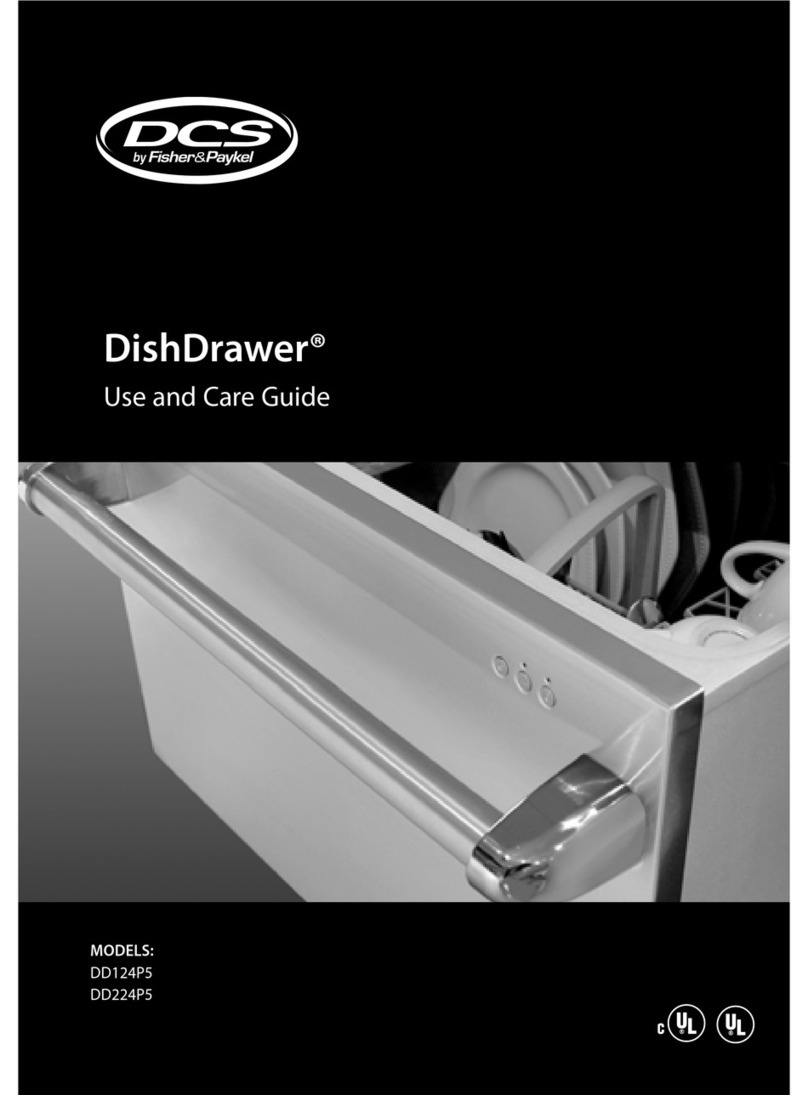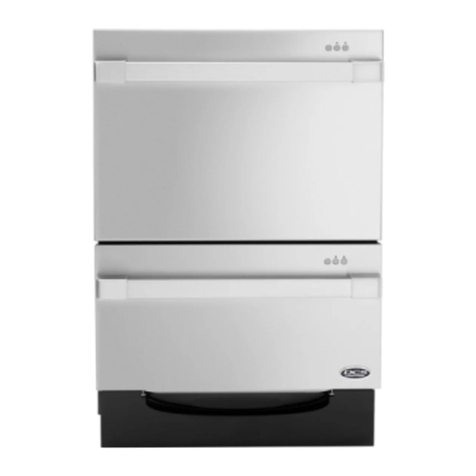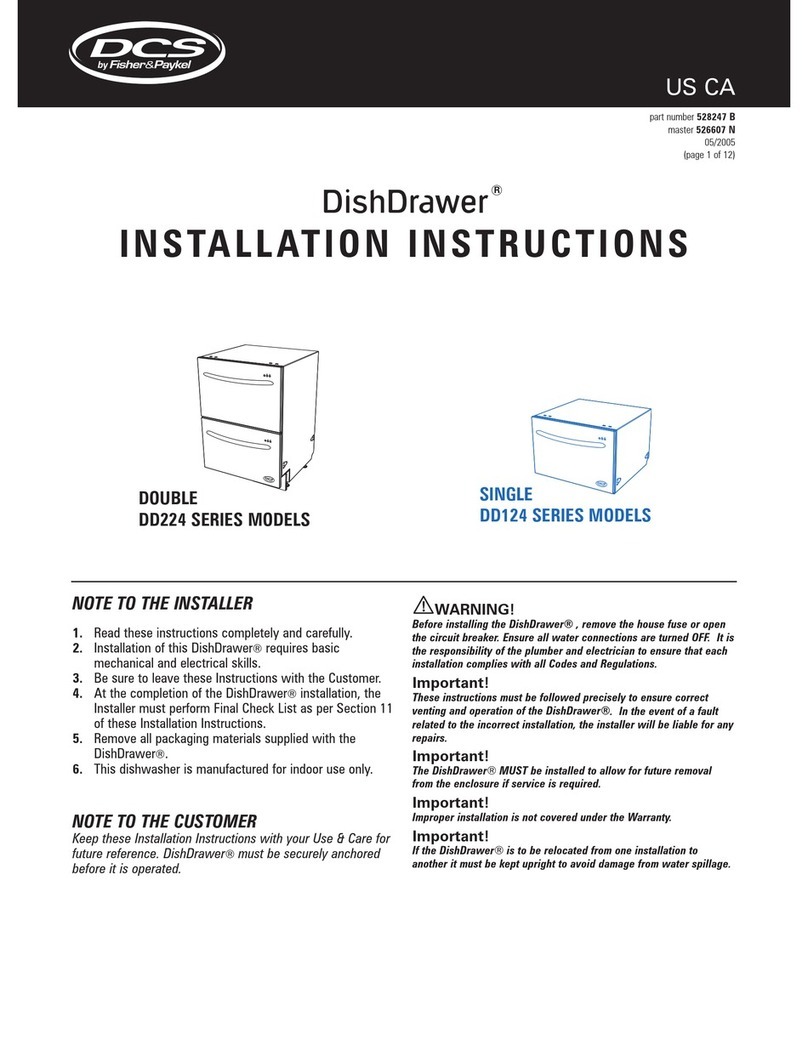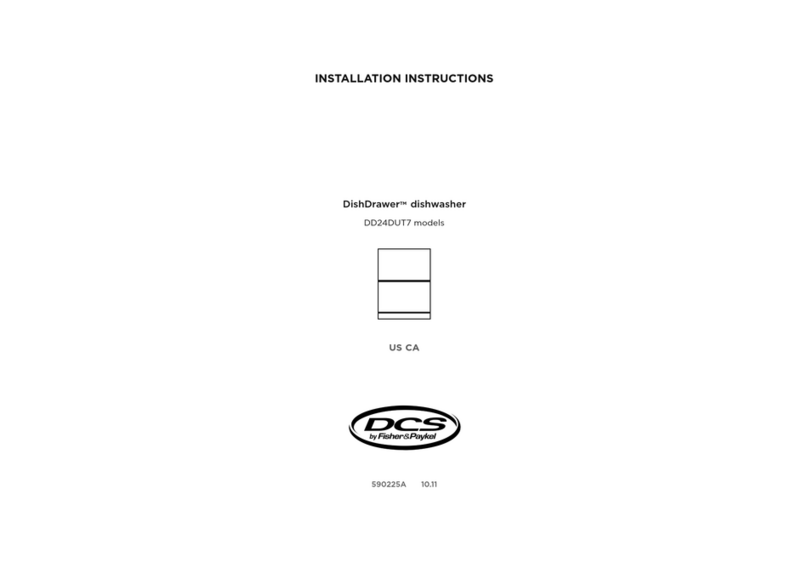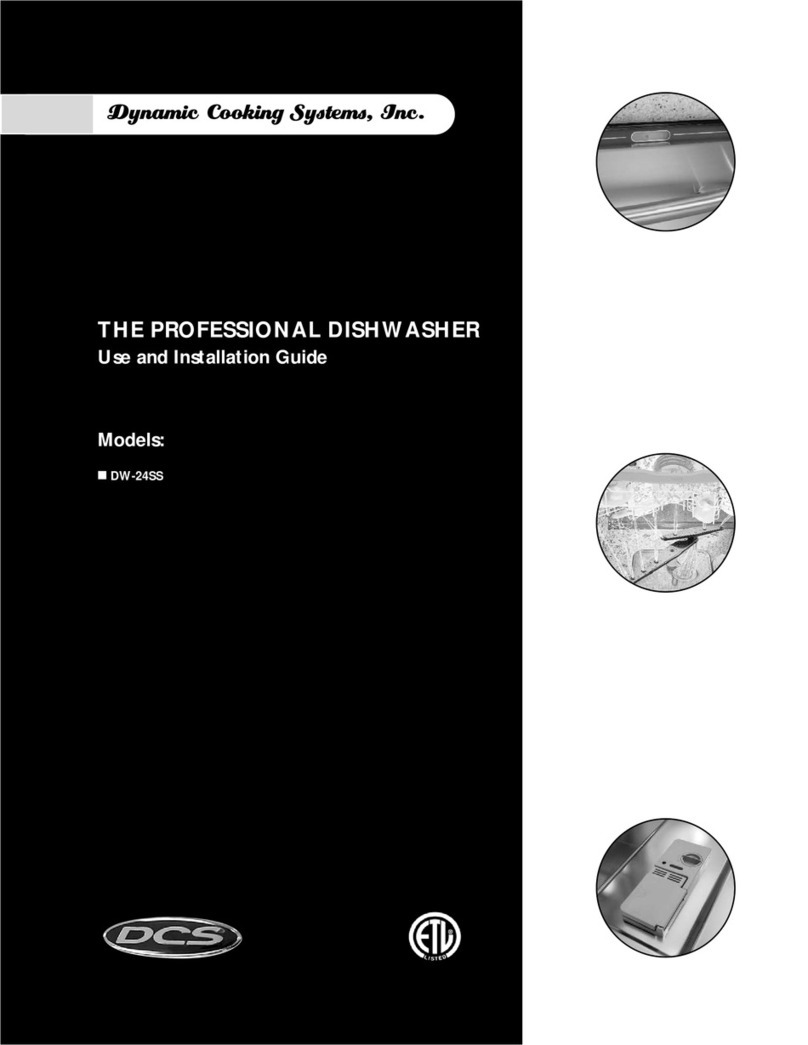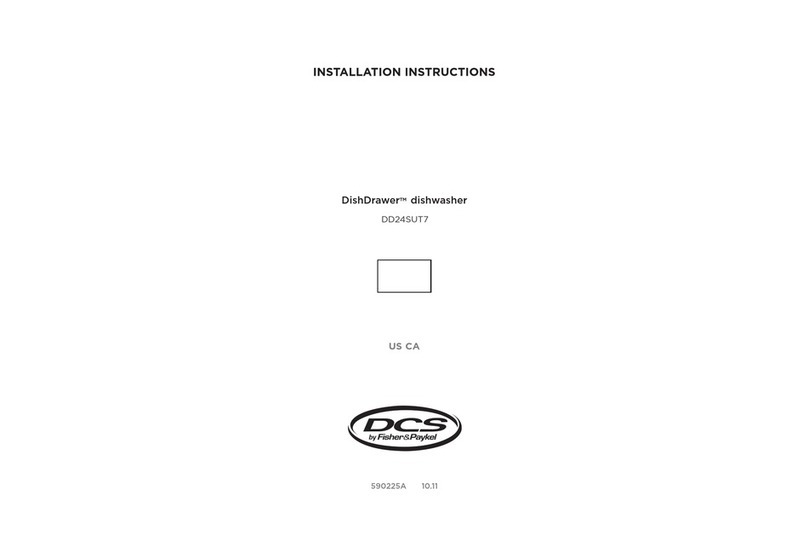OPERATIONAL
Important!
Under no circumstances should you open the drawer whilst the DishDrawer®is in
operation.
Always press the button to pause and wait until you hear the three additional
beeps before opening the drawer.
The DishDrawer®must be used with the motor assembly, filter plate, drain filter and
spray arm in place.
When disconnecting the appliance pull the plug rather than the power supply cord or
junction of cord to avoid damage.
Take care when loading the DishDrawer®not to load dishware items so it prevents
the lid from properly sealing with the drawer. Items should be placed so they do not
protrude above and/or forced into the drawer, otherwise a service call may result.
Household appliances are not intended to be played with by children. Children or
persons with a disability which limits their ability to use the appliance, should have a
responsible person instruct them in its use.The instructor should be satisfied that they
can then use the appliance without danger to themselves or their surroundings.
Close supervision is necessary if this appliance is used by or near children. Do not
allow children to play inside, on or with this appliance or any discarded appliance.
If a Dishwasher cleaner is used, we would strongly recommend a wash program
with detergent should be run immediately afterward, to prevent any damage to the
DishDrawer®.
The DishDrawer®is designed for washing normal household utensils. Items that
are contaminated by petrol, paint, steel or iron debris, corrosive, acidic or alkaline
chemicals are not to be washed in the DishDrawer®.
If the DishDrawer®is not being used for long periods of time, turn the electricity and
water supply to the DishDrawer®off.
Do not pour detergent or rinse agent into the salt reservoir. The detergent or rinse
agent will destroy the water softener.
Important!
This Use & Care should be retained with the appliance for future reference. Should
the appliance be sold or transferred to another owner, always ensure that the
Use & Care is left with the appliance in order that the new owner can become
familiar with the appliance and the relevant warnings.
